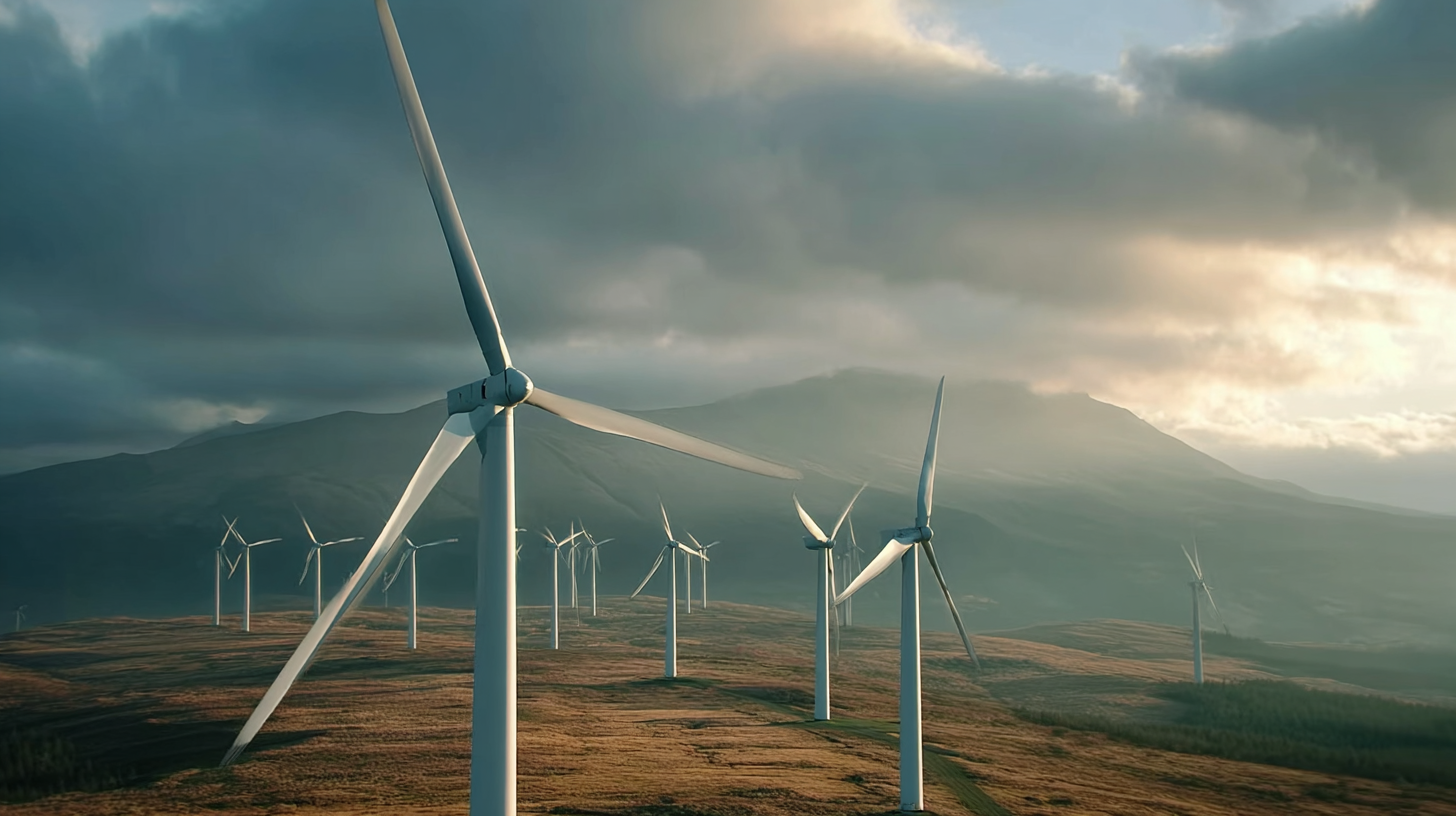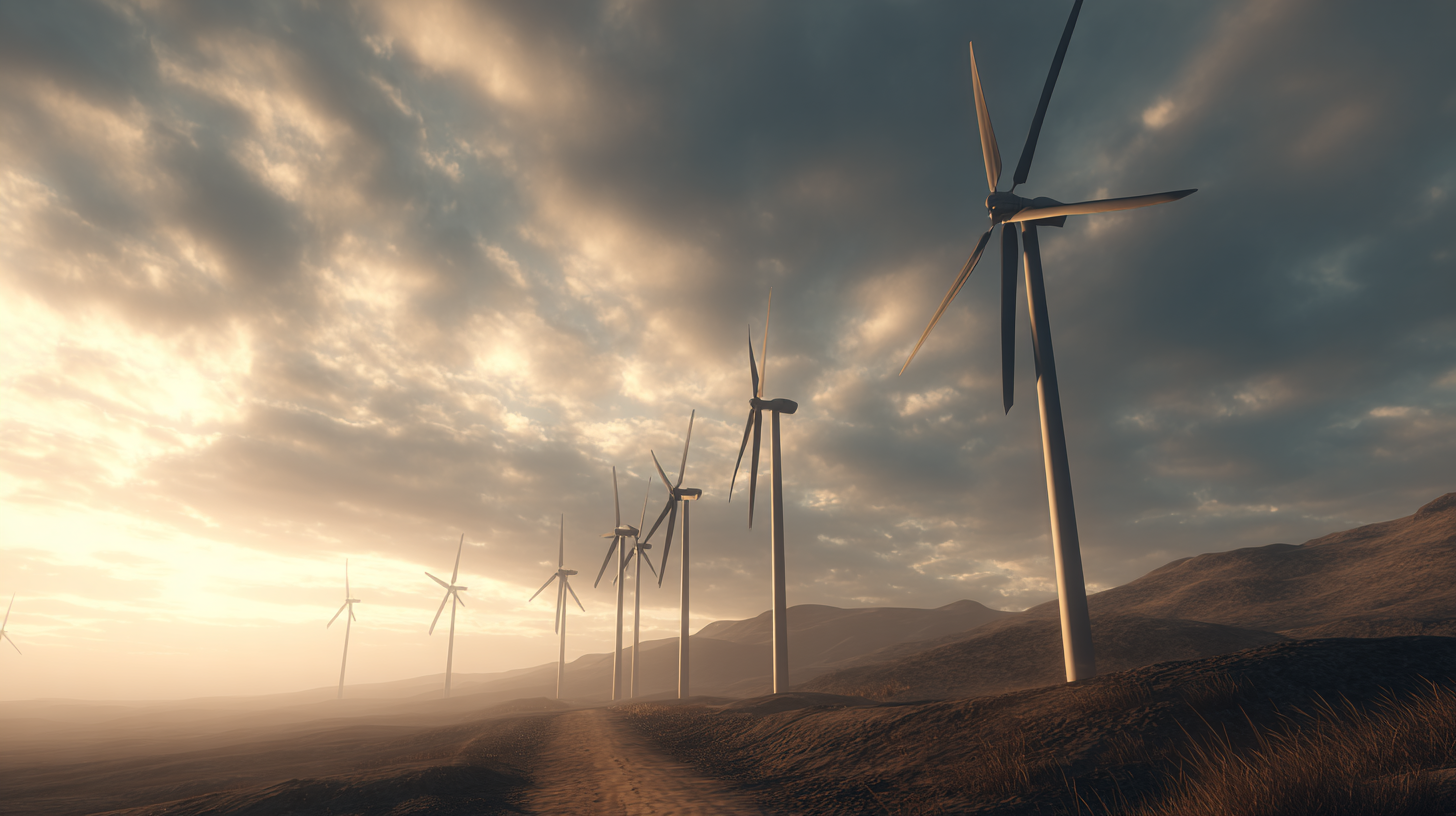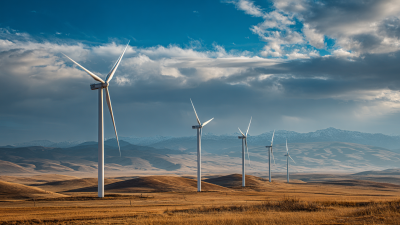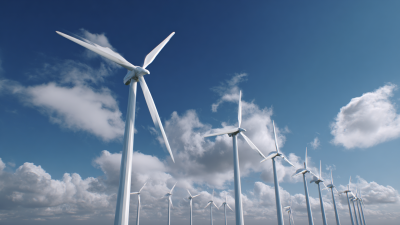The Future of Clean Energy Exploring Innovative Wind Turbines
The growing urgency to transition from fossil fuels to renewable energy sources has placed wind energy at the forefront of sustainable solutions. According to the Global Wind Energy Council (GWEC), the global wind turbine market is projected to reach a capacity of 2,146 GW by 2023, representing a significant increase from previous years. As a crucial component of this industry, innovative wind turbines are being developed to maximize efficiency and minimize costs. Recent advancements in turbine design, such as larger rotor diameters and enhanced materials, are expected to boost energy output and reduce the levelized cost of electricity (LCOE). Furthermore, the integration of smart technology into wind turbines allows for real-time performance monitoring and predictive maintenance, ensuring optimal operation and longevity.

This article explores the future of clean energy through the lens of these innovative wind turbines, highlighting their potential to transform the energy landscape and contribute to global climate goals.
Exploring the Latest Technological Advancements in Wind Turbine Design
The future of clean energy is increasingly tied to advancements in wind turbine technology, particularly the development of floating wind turbines. These innovative designs are making it feasible to harness wind energy in deepwater regions where traditional fixed turbines are not viable. The wind turbine market is expected to see significant growth, with estimates suggesting a market size of approximately 2.132 billion in 2025, projected to rise to 2.722 billion by 2033, reflecting a compound annual growth rate (CAGR) of 3.1%. This surge is driven by technological progress, a growing demand for renewable energy, and the potential for tapping into previously inaccessible wind resources.
One significant advancement involves the creation of ultra-lightweight wind turbines tailored for low-wind-speed areas. Research institutions have collaborated with industry leaders to develop prototypes specifically designed to maximize energy capture in softer wind conditions. These designs promise to revolutionize the way we access and distribute wind energy, making it more decentralized and accessible. Notable prototypes are already being installed in strategic locations, marking a key step towards realizing the potential of wind energy in diverse environments, and reshaping the landscape of clean energy generation globally.
The Future of Clean Energy: Exploring Innovative Wind Turbines
This chart illustrates the power output in megawatts (MW) of various innovative wind turbine designs, showcasing the potential of different types to contribute to clean energy generation in the future.
Harnessing Wind Energy Efficiently: Innovative Blade Designs and Materials
The advancement of wind turbine technology is crucial for maximizing the efficiency of harnessing wind energy. Innovative blade designs are at the forefront of this evolution. Recent studies indicate that optimizing blade aerodynamics can increase energy capture by up to 20%. For instance, the use of variable geometry blades allows for adjustments in real-time to changing wind conditions, thus enhancing overall performance. A report from the National Renewable Energy Laboratory emphasizes that modern blade materials, such as carbon fiber composites, not only reduce weight but also improve structural integrity, allowing turbines to operate in more challenging conditions.
Moreover, the integration of smart materials in turbine blades presents exciting opportunities for future development. According to a study by the International Energy Agency, utilizing shape memory alloys can enable blades to adapt their shape in response to wind velocity, thereby further optimizing energy conversion efficiency. As wind energy continues to play a pivotal role in the global shift towards cleaner energy sources, the implementation of these innovative blade designs and materials will be essential in achieving target efficiency levels, which, as projected, could reach as high as 70% within the next decade.

The Role of Smart Technology in Optimizing Wind Turbine Performance
 As the demand for sustainable energy solutions increases, wind power is gaining attention as a vital component of the clean energy landscape. The integration of smart technology in wind turbine systems is crucial for optimizing performance and efficiency. According to a recent report by the International Renewable Energy Agency (IRENA), the global capacity of wind power is expected to grow from 743 GW in 2020 to over 1,800 GW by 2030. This substantial growth necessitates advancements in turbine technology, and smart systems provide a promising avenue for this evolution.
As the demand for sustainable energy solutions increases, wind power is gaining attention as a vital component of the clean energy landscape. The integration of smart technology in wind turbine systems is crucial for optimizing performance and efficiency. According to a recent report by the International Renewable Energy Agency (IRENA), the global capacity of wind power is expected to grow from 743 GW in 2020 to over 1,800 GW by 2030. This substantial growth necessitates advancements in turbine technology, and smart systems provide a promising avenue for this evolution.
Smart technology, including IoT sensors and AI-driven analytics, is transforming how wind farms operate. These innovations enable real-time monitoring of turbine performance, predictive maintenance, and enhanced energy forecasting. A study by Navigant Research indicates that adopting smart technologies can improve the efficiency of wind turbines by up to 20% by minimizing downtime and optimizing energy output. This leap in capability not only maximizes energy generation but also reduces operational costs for wind energy providers.
Tip: Regularly invest in software that analyzes performance data to anticipate maintenance needs. This proactive approach will prevent costly downtimes and prolong the lifespan of your wind turbines.
Tip: Consider upgrading to smart power management systems that adjust the output based on real-time energy demand, ensuring that your wind farm operates at peak efficiency at all times.
Integrating Wind Turbines with Renewable Energy Systems for Maximum Output
The integration of wind turbines with renewable energy systems is becoming increasingly vital for maximizing energy output, particularly in light of the projected growth in the global circular power transformer market, which is expected to rise from $680.74 million in 2025 to $1.09544 billion by 2032, reflecting a compound annual growth rate (CAGR) of 7.03%. This trend underscores the demand for innovative technologies in the renewable energy sector, including advancements in wind turbine design and functionality.
A notable development is the announcement of five key research projects in wind power under the 2024 National Key R&D Program, aimed at enhancing the efficiency and capacity of wind energy generation. Among these projects is the focus on large-scale offshore floating vertical-axis wind turbines, which represent a significant leap forward in wind energy harvesting. The growing market for wind bearings, projected to expand from $3.7 billion in 2024 to $5.8 billion by 2033, with a CAGR of 5.3%, indicates the increasing investment in infrastructure crucial for supporting advanced wind turbine technologies. Such innovations are essential for building a sustainable electrical grid that can cater to the needs of a global population still grappling with energy access.
Future Trends: Offshore Wind Farms and Their Impact on Clean Energy Solutions
The advent of floating wind turbines marks a significant breakthrough in the clean energy sector, particularly for offshore wind farms. These innovative systems are designed to harness wind energy in deep-water regions where traditional fixed turbines are impractical. The deployment of floating technology opens up previously inaccessible areas for wind energy generation, leveraging vast untapped resources that can significantly contribute to global renewable energy goals.
The growth of the floating wind turbine market is driven by rapid technological advancements and an increasing demand for renewable energy. As countries strive to meet their climate commitments, floating wind technology is positioned as a key player in the transition to clean energy. Furthermore, the integration of these systems with the energy supply chain not only enhances the sustainability of energy production but also strengthens economic opportunities in regions that are traditionally reliant on fossil fuels. The future of offshore wind farms, therefore, is not just a vision but a developing reality with the potential to reshape the landscape of energy production worldwide.
Related Posts
-

Chinese Excellence in Wind Turbine Manufacturing: Powering a Sustainable Future Worldwide
-

Innovative Solutions for Harnessing Wind Turbines: Unlocking 50% More Efficiency by 2025
-

How to Harness Wind Energy with Effective Wind Turbines Solutions
-

5 Essential Benefits of Home Solar Power Systems You Need to Know
-

Unmatched Quality from China's Premier Factory for the Best Residential Wind Turbines
-

The Ultimate Guide to Selecting the Best Industrial Power Solutions for Global Buyers
